sierraclub.org - sierra magazine - november/december 2009 - mixed media


Mixed Media | Deep Thoughts and Oddball Interpretations
Women Who Wander | Earth Beat: Shepard Fairey
Women Who Wander
Are Female explorers better than their male counterparts?
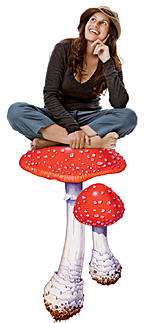 When anthropologist Louis Leakey decided to hire three proteges--one to study chimpanzees in Tanzania, one to study gorillas in Rwanda, and one to study orangutans in Borneo--he deliberately recruited women. His detractors thought he was having a midlife crisis and needed to surround himself with female admirers; he insisted that women were tougher, more observant, and more tenacious than men.
When anthropologist Louis Leakey decided to hire three proteges--one to study chimpanzees in Tanzania, one to study gorillas in Rwanda, and one to study orangutans in Borneo--he deliberately recruited women. His detractors thought he was having a midlife crisis and needed to surround himself with female admirers; he insisted that women were tougher, more observant, and more tenacious than men.
The stories of the three women Leakey selected, Jane Goodall, Dian Fossey, and Birute Galdikas, are beautifully told in Sy Montgomery's Walking With the Great Apes (Chelsea Green), updated and reissued this year. Montgomery describes not just what the women achieved in science and conservation but also what they endured emotionally, including their efforts to find love and raise children without sacrificing their adventurous careers.
Montgomery, too, is an explorer. Though she lives on a farm in New Hampshire, she has swum with pink dolphins in the Amazon, hunted for a rare and secretive bear in Southeast Asia, and studied man-eating tigers in Bangladesh. The books she wrote about these expeditions, Journey of the Pink Dolphins, Search for the Golden Moon Bear, and Spell of the Tiger, were also reissued by Chelsea Green this year.
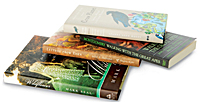 Until not too long ago, many female explorers found their vocation through their husbands. I'm not qualified to assess Leakey's claim that women make better field-workers, but one thing's for sure: The famed nature filmmaker Alan Root wouldn't have gotten far without his first wife, Joan Root, the daughter of a Kenyan farmer. A gripping biography of her by Mark Seal, Wildflower: An Extraordinary Life and Untimely Death in Africa (Random House, 2009), shows how Alan, flashy and charismatic, depended on quiet, reliable, and organized Joan throughout the creative process.
Until not too long ago, many female explorers found their vocation through their husbands. I'm not qualified to assess Leakey's claim that women make better field-workers, but one thing's for sure: The famed nature filmmaker Alan Root wouldn't have gotten far without his first wife, Joan Root, the daughter of a Kenyan farmer. A gripping biography of her by Mark Seal, Wildflower: An Extraordinary Life and Untimely Death in Africa (Random House, 2009), shows how Alan, flashy and charismatic, depended on quiet, reliable, and organized Joan throughout the creative process.
She planned their safaris, nursed him back to health after snakebites, operated their hot-air balloon, and shot and edited footage. None of this kept him from leaving her for another woman. Though devastated, Joan eventually established her own identity as an outspoken environmentalist, taking on illegal fishing at her beloved Lake Naivasha, which might have led to her murder in 2006.
As with Root, it took an untimely death to get explorer Margaret Mee the attention she deserved. Beginning in the 1950s, Mee, a Brit living in Brazil, organized more than a dozen expeditions into the Amazon rainforest to study and paint plants. She died in a car crash in 1988 while visiting England to celebrate a crowning moment in her career: the opening of an exhibit of her gorgeous, inventive, and botanically accurate paintings at the Royal Botanic Gardens, Kew. Flowers of the Amazon Forests: The Botanical Art of Margaret Mee (Antique Collectors Club, 2006) is a stunning book that also contains entries from her diary.
Fortunately, martyrdom is not required of talented women artists. Ailyn Hoey, a Vermonter, has never let gender stereotypes get in her way; she knows how to skin a deer, build a cabin, and drive a race car. Today, she focuses on creating charcoal drawings of the remote wildernesses in which she loves to camp, such as the Everglades, Cape Cod National Seashore, and Big Bend National Park. You can marvel at her skill at ailynhoey.com.
In a similar vein, Lucia deLeiris, of Massachusetts, has made expeditions to Antarctica and the Arctic to paint glaciers, snowfields, birds, and seals. She and a friend once camped in a fishing hut in Antarctica in "spring"; the sun only shone for a few hours each day, and the temperature often dipped below minus 30 degrees Fahrenheit. You can see what she saw from the warmth of your living room by visiting luciadeleiris.com.
Of course, plenty of women with exploring tendencies can't--or don't want to--venture far from home, especially if they have young children. I love the blog of artist, writer, and naturalist Julie Zickefoose), who, with her husband, is raising two children on a vast nature preserve in Ohio's Appalachian foothills. If, like me, you live in a city apartment, you'll get a vicarious thrill as Zickefoose monitors her bluebird boxes and picks fruit in the woods. Her beautifully written and illustrated book, Letters From Eden: A Year at Home, in the Woods (Houghton Mifflin, 2006), will also transport you to her world.
Can city dwellers be nature explorers too? Lyanda Lynn Haupt, author of the elegant Crow Planet: Essential Wisdom From the Urban Wilderness (Little, Brown and Company, 2009), thinks so. Haupt, who has a young daughter and needs to stay near her Seattle home, spent years watching, pursuing, sketching, and musing on her city's crows. Nature proclaims itself everywhere, she argues, and even a trip to Target can be an opportunity to observe the "more-than-human world." The field trip begins "whenever we start paying attention." --Olivia Gentile
Excerpt adapted from Olivia Gentile's Life List: A Woman's Quest for the World's Most Amazing Birds
(Bloomsbury USA, 2009), a biography of Phoebe Snetsinger, a housewife, cancer survivor, and adventurer who saw more bird species than anyone in history.
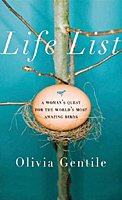 In 1981, at age 49, Phoebe was told she had melanoma and less than a year to live. Since there were no good treatments, she decided to spend her final months chasing birds wherever she could, a plan her family supported. She went to Alaska, Australia, Suriname, and India, always thinking each trip was her last. But her doctors had been wrong, and a year after her diagnosis, her body was robust, her spirit was exuberant, and she was starting to wonder how many species she could find before she was forced to stop.
In 1981, at age 49, Phoebe was told she had melanoma and less than a year to live. Since there were no good treatments, she decided to spend her final months chasing birds wherever she could, a plan her family supported. She went to Alaska, Australia, Suriname, and India, always thinking each trip was her last. But her doctors had been wrong, and a year after her diagnosis, her body was robust, her spirit was exuberant, and she was starting to wonder how many species she could find before she was forced to stop.
In the years that followed, Phoebe crisscrossed the globe with ever-deepening abandon, staking out rare and spectacular birds in the wildest places on earth. She slept in yurts, at truck stops, and by the side of the road; she traveled in tiny planes, in canoes, and on horseback. Once, she was chased by spear-wielding tribesmen; another time, she was boatwrecked in the ocean. In New Guinea, she was kidnapped and brutally assaulted by five thugs. By 1990, Phoebe had become obsessed with seeing 8,000 species, more than any other birder in history. She'd also lost the capacity to consider her family, her health, and her safety.
Earth Beat
Shepard Fairey: An Artist with a Mission
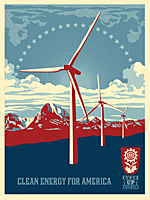 Wind power is patriotic. That may sound schmaltzy, but artist Shepard Fairey, who created the iconic "Hope" poster depicting then presidential candidate Barack Obama, has shown that simple messages appealing to a core Americanism can be powerful. Sierra chatted with Fairey about his artwork for MoveOn.org's clean-energy campaign and art's power to incite domestic heroism.
Wind power is patriotic. That may sound schmaltzy, but artist Shepard Fairey, who created the iconic "Hope" poster depicting then presidential candidate Barack Obama, has shown that simple messages appealing to a core Americanism can be powerful. Sierra chatted with Fairey about his artwork for MoveOn.org's clean-energy campaign and art's power to incite domestic heroism.
What makes good political art resonate?
It's still a mystery to me. Sometimes I'm completely wrong. The Obama poster achieved everything I hoped for times 10. The idea is to make an image that appeals to people viscerally and makes them curious about the content and leads them to find a more substantive and intellectual justification for why they like it.
Is it easier to create political art that's against something than for something?
It's a lot easier to be antagonistic and negative. People respond to drama. I did Bush with fangs and blood dripping out the corner of his mouth. It was cathartic, but I don't know if it was constructive.
What got you interested in alternative energy?
I had done some environmental art projects, but when I saw An Inconvenient Truth, my motivation went to the next level.
What in the film motivated you?
The message that global warming is going to be affecting the habitability of the entire planet. I'm not a doom-and-gloom fearmonger, but I have young kids, and I want them to have a bright future.
Beyond that, clean energy appeals to the left and the right. For the lefties, it's good for the environment. But even economic imperialists have to see that, for the United States to remain economically dominant, there's going to have to be technology we can sell to the rest of the world that's not based on fossil fuels. Clean energy seems like the way forward for everyone.
What does your wind-power image convey?
That the windmill is an energy source that's very American. It taps into the spirit of conquering the West the same way as other symbols of Americana. I'm not afraid to tap into xenophobia with a patriotic pro-windmill image if it gets people on board.
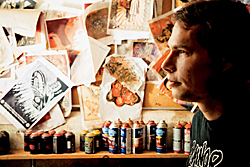 The top half looks very United Nations/One World.
The top half looks very United Nations/One World.
The United States is the biggest consumer and the biggest polluter. Embracing clean energy and wind power is going to affect the rest of the planet for the better.
How does environmentally themed art differ from other projects?
A lot of environmental concerns aren't sexy, so how do you make images that intrigue an audience that isn't already on board? I'm trying to find ways to do that visually. I made a piece called These Sunsets Are to Die For! where a couple is looking at a sunset made by pollution. I did a portrait of my wife lying out in the sun with a newspaper covering her face; all the headlines are about global warming, but she's too busy trying to get a tan to pay attention.
There's humor in those pieces, but they're also visually striking. Similarly, Evolve Devolve shows an old-fashioned windmill on the left side of the composition whose structure is similar to an oil derrick that's on fire on the right side. It's not tough to figure out what the message is, but there's a tension between the beauty of the sky and the sinister aspects that creates a dynamic art piece.
MoveOn distributed 300,000 stickers based on your windmill poster. What's the benefit of art that's random and public?
You can appeal to the rebel with an idea that needs to get out, and you can engage an audience that's not already converted. Someone who shares an image can have a more profound effect than if it was distributed through traditional channels. That's always been the strength of imagery that's on the street or viral or grassroots.
Is street art really street pollution?
To people who say I'm just adding to the visual noise, I would say, one, they might not be looking at the subtleties, and two, they might be right. But the reason they're right may be because I have to work against the control of public space by corporate interests. To have any degree of democracy in the use of public space, you have to just take it.
Your Web site says you've been "manufacturing quality dissent since 1989," yet your most recent exhibit was sponsored by Levi Strauss. Are you now an insider?
You need to work outside the system if the system isn't giving you what you need. But even if you've gotten used to being marginalized, that doesn't mean there aren't opportunities to be part of the system on terms that you're comfortable with.
What's your environmental vice?
I make posters that are printed on paper and stickers that are printed on vinyl. Hopefully it's three steps forward and only two steps back.
--interview by Reed McManus
Photos, from top: Sara Stathas (toadstool illustration: Roger Kent/Illustration Ltd), Sara Stathas, Michael Muller; used with permission